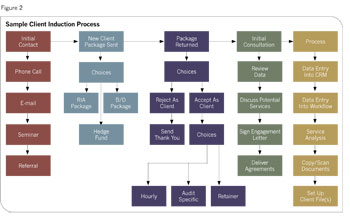Figure 2 is an example of such a flowchart. This particular one shows a variety of different kinds of elements within each task set.

There are at least three possible types of task sets, sequential, nonsequential and decision trees. Sequential tasks are tasks that are accomplished one right after the other. In workflow management programs, generally the system "fires" (begins) the next task based on the successful completion of the last task and so on. In nonsequential tasks, you may have several tasks that need to be accomplished all at the same time. This would be where the completion of one task could trigger the automatic assignment of several tasks at once. In decision trees, what happened in the prior task might determine which of a list of future tasks must then be accomplished, and the system could automatically create the appropriate next step(s) based on how the prior step was completed or determined.
These three typical choices are easy enough, on their own, to understand. The reality of complex workflows, though, is that a workflow task set very likely could be comprised of several different types of tasks that add to the confusion in developing the workflow. There is also the issue of tying workflows to a database. With some client relationship management software programs (CRM), workflow features are available and can be directly tied to the associated client database. This offers several advantages in that if one needs to check on the status of a workflow for a particular client, it can usually be found in the client's record. Junxure (www.junxure.com), ProTracker Advantage (www.protracker.com), Redtail (www.redtailtechnology.com), Upswing (www.upswingcrm.com), Goldmine (www.goldmine.com), and several others contain workflow features (albeit on differing levels of sophistication). However, workflow is not exclusive to CRMs. There are stand-alone workflow programs, and workflow features can be found with such document management software as Laserfiche (www.laserfiche.com).
Another key aspect of efficiency in the use of workflows is in the management of the workflow process. Most workflow software products have reporting capabilities that can simplify the process of managing people and resources. Having the ability to view a list of outstanding workflows and/or completed workflows can free a manager from having to constantly ask employees what work is going on in the office. Having the ability to generate FYI type e-mails can also help; however, in busy offices this can quickly become a burdensome list of e-mails for a manager to have to sift over each day. In those cases, generating a dashboard-type reporting system or building lists for daily viewing is preferred.
In reviewing the lists, it is quick and easy to spot areas where slowdowns are occurring, which can focus a manager's attention on those items for follow-up and review. It may help in spotting training opportunities or system bottlenecks as well. For the system to work well, managers as well as staff must be trained in how to use it effectively. In the end, the efficiency of the workflow is going to depend on the buy-in by all parties involved in the process.
According to James Carney, CEO of By All Accounts, software "should work like a refrigerator." By this, he means that software should be easy to use, work the way it is expected and not require the user to understand how it works as much as that it works. With a refrigerator, we only want to be able to organize it to find things easily and know that it keeps our food and beverages cold. We do not necessarily need to know how the compressor works. In workflow software, the goal is to make the process of accomplishing sets of tasks easier and more efficient, as well as simplifying the management process.
David L. Lawrence, RFC, ChFE, AIF, is a practice efficiency consultant and is president of EfficientPractice.com, a practice consulting firm based in San Diego, Calif. (www.efficientpractice.com). The Efficient Practice offers an advisor network and a monthly newsletter.








